SPRSP89A December 2023 – December 2024 AM62P , AM62P-Q1
ADVANCE INFORMATION
- 1
- 1 Features
- 2 Applications
- 3 Description
- 4 Device Comparison
-
5 Terminal Configuration and Functions
- 5.1 Pin Diagrams
- 5.2 Pin Attributes
- 5.3
Signal Descriptions
- 14
- 5.3.1 CPSW3G
- 5.3.2 CPTS
- 5.3.3 CSI-2
- 5.3.4 DDRSS
- 5.3.5 DSI
- 5.3.6 DSS
- 5.3.7 ECAP
- 5.3.8 Emulation and Debug
- 5.3.9 EPWM
- 5.3.10 EQEP
- 5.3.11 GPIO
- 5.3.12 GPMC
- 5.3.13 I2C
- 5.3.14 MCAN
- 5.3.15 MCASP
- 5.3.16 MCSPI
- 5.3.17 MDIO
- 5.3.18 MMC
- 5.3.19 OLDI
- 5.3.20 OSPI
- 5.3.21 Power Supply
- 5.3.22 Reserved
- 5.3.23 System and Miscellaneous
- 5.3.24 TIMER
- 5.3.25 UART
- 5.3.26 USB
- 5.4 Pin Connectivity Requirements
-
6 Specifications
- 6.1 Absolute Maximum Ratings
- 6.2 ESD Ratings for Devices which are not AEC - Q100 Qualified
- 6.3 ESD Ratings for AEC - Q100 Qualified Devices
- 6.4 Power-On Hours (POH)
- 6.5 Recommended Operating Conditions
- 6.6 Operating Performance Points
- 6.7 Power Consumption Summary
- 6.8
Electrical
Characteristics
- 6.8.1 I2C Open-Drain, and Fail-Safe (I2C OD FS) Electrical Characteristics
- 6.8.2 Fail-Safe Reset (FS RESET) Electrical Characteristics
- 6.8.3 High-Frequency Oscillator (HFOSC) Electrical Characteristics
- 6.8.4 Low-Frequency Oscillator (LFXOSC) Electrical Characteristics
- 6.8.5 eMMCPHY Electrical Characteristics
- 6.8.6 SDIO Electrical Characteristics
- 6.8.7 LVCMOS Electrical Characteristics
- 6.8.8 OLDI LVDS (OLDI) Electrical Characteristics
- 6.8.9 CSI-2 (D-PHY) Electrical Characteristics
- 6.8.10 DSI (D-PHY) Electrical Characteristics
- 6.8.11 USB2PHY Electrical Characteristics
- 6.8.12 DDR Electrical Characteristics
- 6.9 VPP Specifications for One-Time Programmable (OTP) eFuses
- 6.10 Thermal Resistance Characteristics
- 6.11 Temperature Sensor Characteristics
- 6.12
Timing and Switching Characteristics
- 6.12.1 Timing Parameters and Information
- 6.12.2 Power Supply Requirements
- 6.12.3 System Timing
- 6.12.4
Clock Specifications
- 6.12.4.1 Input Clocks / Oscillators
- 6.12.4.2 Output Clocks
- 6.12.4.3 PLLs
- 6.12.4.4 Recommended System Precautions for Clock and Control Signal Transitions
- 6.12.5
Peripherals
- 6.12.5.1 CPSW3G
- 6.12.5.2 CPTS
- 6.12.5.3 CSI-2
- 6.12.5.4 DDRSS
- 6.12.5.5 DSI
- 6.12.5.6 DSS
- 6.12.5.7 ECAP
- 6.12.5.8 Emulation and Debug
- 6.12.5.9 EPWM
- 6.12.5.10 EQEP
- 6.12.5.11 GPIO
- 6.12.5.12 GPMC
- 6.12.5.13 I2C
- 6.12.5.14 MCAN
- 6.12.5.15 MCASP
- 6.12.5.16 MCSPI
- 6.12.5.17 MMCSD
- 6.12.5.18 OLDI
- 6.12.5.19 OSPI
- 6.12.5.20 Timers
- 6.12.5.21 UART
- 6.12.5.22 USB
-
7 Detailed Description
- 7.1 Overview
- 7.2 Processor Subsystems
- 7.3 Accelerators and Coprocessors
- 7.4 Other Subsystems
- 7.5
Peripherals
- 7.5.1 Gigabit Ethernet Switch (CPSW3G)
- 7.5.2 Camera Serial Interface Receiver (CSI_RX_IF)
- 7.5.3 Display Subsystem (DSS)
- 7.5.4 Enhanced Capture (ECAP)
- 7.5.5 Error Location Module (ELM)
- 7.5.6 Enhanced Pulse Width Modulation (EPWM)
- 7.5.7 Error Signaling Module (ESM)
- 7.5.8 Enhanced Quadrature Encoder Pulse (EQEP)
- 7.5.9 General-Purpose Interface (GPIO)
- 7.5.10 General-Purpose Memory Controller (GPMC)
- 7.5.11 Global Timebase Counter (GTC)
- 7.5.12 Inter-Integrated Circuit (I2C)
- 7.5.13 Modular Controller Area Network (MCAN)
- 7.5.14 Multichannel Audio Serial Port (MCASP)
- 7.5.15 Multichannel Serial Peripheral Interface (MCSPI)
- 7.5.16 Multi-Media Card Secure Digital (MMCSD)
- 7.5.17 Octal Serial Peripheral Interface (OSPI)
- 7.5.18 Timers
- 7.5.19 Universal Asynchronous Receiver/Transmitter (UART)
- 7.5.20 Universal Serial Bus Subsystem (USBSS)
-
8 Applications,
Implementation, and Layout
- 8.1 Device Connection and Layout Fundamentals
- 8.2 Peripheral- and Interface-Specific Design Information
- 8.3 Clock Routing Guidelines
- 9 Device and Documentation Support
- 10Revision History
- 11Mechanical, Packaging, and Orderable Information
Package Options
Refer to the PDF data sheet for device specific package drawings
Mechanical Data (Package|Pins)
- AMH|466
Thermal pad, mechanical data (Package|Pins)
Orderable Information
6.12.3.1 Reset Timing
Tables and figures provided in this section define timing conditions, timing requirements, and switching characteristics for reset related signals.
Table 6-7 Reset Timing Conditions
| PARAMETER | MIN | MAX | UNIT | ||
|---|---|---|---|---|---|
| INPUT CONDITIONS | |||||
| SRI | Input slew rate | VDD(1) = 1.8V | 0.0018 | V/ns | |
| VDD(1) = 3.3V | 0.0033 | V/ns | |||
| OUTPUT CONDITIONS | |||||
| CL | Output load capacitance | 30 | pF | ||
(1) VDD stands for corresponding power supply. For more information on the power supply name and the corresponding ball(s), see POWER column of the Pin Attributes table.
Table 6-8 MCU_PORz Timing Requirements see Figure 6-7
| NO. | PARAMETER | MIN | MAX | UNIT | |
|---|---|---|---|---|---|
| RST1 | th(SUPPLIES_VALID - MCU_PORz) | Hold time, MCU_PORz active (low) at Power-up after supplies valid (using external crystal circuit) | 9500000 | ns | |
| RST2 | Hold time, MCU_PORz active (low) at Power-up after supplies valid and external clock stable (using external LVCMOS clock source) | 1200 | ns | ||
| RST3 | tw(MCU_PORzL) | Pulse Width, MCU_PORz low after Power-up (without removal of Power or system reference clock MCU_OSC0_XI/XO) | 1200 | ns | |
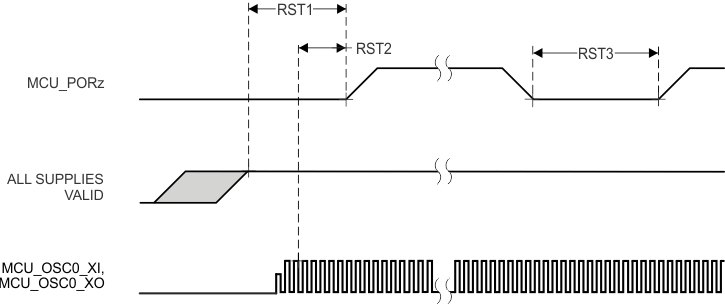 Figure 6-7 MCU_PORz Timing Requirements
Figure 6-7 MCU_PORz Timing Requirements Table 6-9 MCU_RESETSTATz, and RESETSTATz Switching Characteristics see Figure 6-8
| NO. | PARAMETER | MIN | MAX | UNIT | |
|---|---|---|---|---|---|
| RST4 | td(MCU_PORzL-MCU_RESETSTATzL) | Delay time, MCU_PORz active (low) to MCU_RESETSTATz active (low) | 0 | ns | |
| RST5 | td(MCU_PORzH-MCU_RESETSTATzH) | Delay time, MCU_PORz inactive (high) to MCU_RESETSTATz inactive (high) | 6120*S(1) | ns | |
| RST6 | td(MCU_PORzL-RESETSTATzL) | Delay time, MCU_PORz active (low) to RESETSTATz active (low) | 0 | ns | |
| RST7 | td(MCU_PORzH-RESETSTATzH) | Delay time, MCU_PORz inactive (high) to RESETSTATz inactive (high) | 9195*S(1) | ns | |
| RST8 | tw(MCU_RESETSTATzL) | Pulse Width, MCU_RESETSTATz low (SW_MCU_WARMRST) | 966*S(1) | ns | |
| RST9 | tw(RESETSTATzL) | Pulse Width, RESETSTATz low (SW_MCU_WARMRST, SW_MAIN_PORz, or SW_MAIN_WARMRST) | 4040*S | ns | |
(1) S = MCU_OSC0_XI/XO clock period in ns.
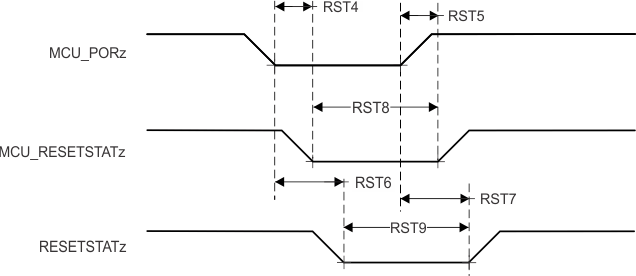 Figure 6-8 MCU_RESETSTATz, and RESETSTATz Switching Characteristics
Figure 6-8 MCU_RESETSTATz, and RESETSTATz Switching CharacteristicsTable 6-10 MCU_RESETz Timing Requirements see Figure 6-9
| NO. | PARAMETER | MIN | MAX | UNIT | |
|---|---|---|---|---|---|
| RST10 | tw(MCU_RESETzL)(1) | Pulse Width, MCU_RESETz active (low) | 1200 | ns | |
(1) This timing parameter is valid only after all supplies are valid and MCU_PORz has been asserted for the specified time.
Table 6-11 MCU_RESETSTATz, and RESETSTATz Switching Characteristics see Figure 6-9
| NO. | PARAMETER | MIN | MAX | UNIT | |
|---|---|---|---|---|---|
| RST11 | td(MCU_RESETzL-MCU_RESETSTATzL) | Delay time, MCU_RESETz active (low) to MCU_RESETSTATz active (low) | 0 | ns | |
| RST12 | td(MCU_RESETzH-MCU_RESETSTATzH) | Delay time, MCU_RESETz inactive (high) to MCU_RESETSTATz inactive (high) | 966*S(1) | ns | |
| RST13 | td(MCU_RESETzL-RESETSTATzL) | Delay time, MCU_RESETz active (low) to RESETSTATz active (low) | 960 | ns | |
| RST14 | td(MCU_RESETzH-RESETSTATzH) | Delay time, MCU_RESETz inactive (high) to RESETSTATz inactive (high) | 4040*S(1) | ns | |
(1) S = MCU_OSC0_XI/XO clock period in ns.
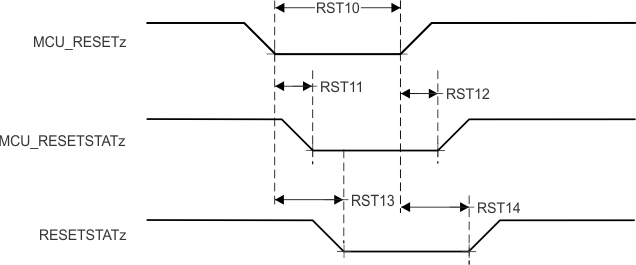 Figure 6-9 MCU_RESETz, MCU_RESETSTATz, and RESETSTATz Timing Requirements and Switching Characteristics
Figure 6-9 MCU_RESETz, MCU_RESETSTATz, and RESETSTATz Timing Requirements and Switching CharacteristicsTable 6-12 RESET_REQz Timing Requirements see Figure 6-10
| NO. | PARAMETER | MIN | MAX | UNIT | |
|---|---|---|---|---|---|
| RST15 | tw(RESET_REQzL)(1) | Pulse Width, RESET_REQz active (low) | 1200 | ns | |
(1) This timing parameter is valid only after all supplies are valid and MCU_PORz has been asserted for the specified time.
Table 6-13 RESETSTATz Switching Characteristics see Figure 6-10
| NO. | PARAMETER | MIN | MAX | UNIT | |
|---|---|---|---|---|---|
| RST16 | td(RESET_REQzL-RESETSTATzL) | Delay time, RESET_REQz active (low) to RESETSTATz active (low) | 900*T(1) | ns | |
| RST17 | td(RESET_REQzH-RESETSTATzH) | Delay time, RESET_REQz inactive (high) to RESETSTATz inactive (high) | 4040*S(2) | ns | |
(1) T = Reset Isolation Time (Software Dependent)
(2) S = MCU_OSC0_XI/XO clock period in ns.
 Figure 6-10 RESET_REQz and RESETSTATz Timing Requirements and Switching Characteristics
Figure 6-10 RESET_REQz and RESETSTATz Timing Requirements and Switching CharacteristicsTable 6-14 EMUx Timing Requirements see Figure 6-11
| NO. | PARAMETER | MIN | MAX | UNIT | |
|---|---|---|---|---|---|
| RST18 | tsu(EMUx-MCU_PORz) | Setup time, EMU[1:0] before MCU_PORz inactive (high) | 3*S(1) | ns | |
| RST19 | th(MCU_PORz - EMUx) | Hold time, EMU[1:0] after MCU_PORz inactive (high) | 10 | ns | |
(1) S = MCU_OSC0_XI/XO clock period in ns.
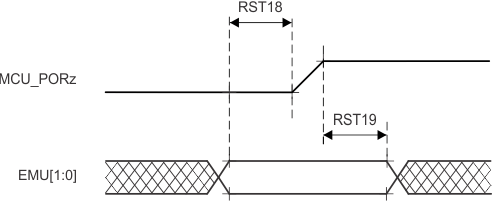 Figure 6-11 EMUx Timing Requirements
Figure 6-11 EMUx Timing RequirementsTable 6-15 BOOTMODE Timing Requirements see Figure 6-12
| NO. | PARAMETER | MIN | MAX | UNIT | |
|---|---|---|---|---|---|
| RST23 | tsu(BOOTMODE-PORz_OUT) | Setup time, BOOTMODE[15:00] valid before PORz_OUT high (External MCU PORz event or Software SW_MAIN_PORz) | 3*S(1) | ns | |
| RST24 | th(PORz_OUT - BOOTMODE) | Hold time, BOOTMODE[15:00] valid after PORz_OUT high (External MCU PORz event, or Software SW_MAIN_PORz) | 0 | ns | |
(1) S = MCU_OSC0_XI/XO clock period in ns.
Table 6-16 PORz_OUT Switching Characteristics see Figure 6-12
| NO. | PARAMETER | MIN | MAX | UNIT | |
|---|---|---|---|---|---|
| RST25 | td(MCU_PORzL-PORz_OUT) | Delay time, MCU_PORz active (low) to PORz_OUT active (low) | 0 | ns | |
| RST26 | td(MCU_PORzH-PORz_OUT) | Delay time, MCU_PORz inactive (high) to PORz_OUT inactive (high) | 1840 | ns | |
| RST27 | tw(PORz_OUTL) | Pulse Width, PORz_OUT low (MCU_PORz or SW_MAIN_PORz) | 1200 | ns | |
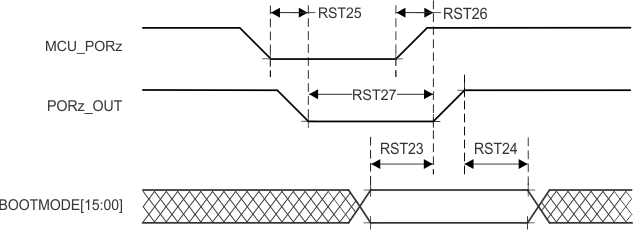 Figure 6-12 BOOTMODE Timing Requirements and PORz_OUT Switching Characteristics
Figure 6-12 BOOTMODE Timing Requirements and PORz_OUT Switching Characteristics